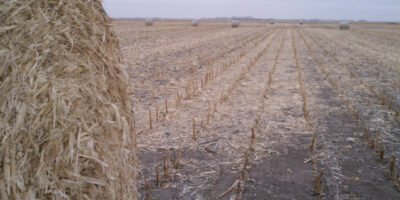
Ripple effects. Chain of events. Slippery slope. No matter how you frame it, it’s no secret that policies, — however well intentioned — can have unintended consequences. New, first-of-its-kind research from the Nelson Institute for Environmental Studies investigated the connections between biofuels and threatened/endangered species across the U.S. and found that the federal mandate for corn ethanol production is likely jeopardizing imperiled wildlife.
The work, published in the March issue of the peer-reviewed journal Biological Conservation, is the first scientific assessment to establish the connection between renewable fuels policy, the conversion of land to grow biofuel crops, and adverse impacts to critical habitat of threatened and endangered species. “It’s not surprising that vulnerable wildlife are at risk, given what we know about the impacts of corn ethanol production,” says Tyler Lark, the paper’s author. “What’s more shocking is that we’re 15 years into our current biofuels policy, and there’s been little to no research on these interactions.”
The policy in question is the Renewable Fuel Standard (RFS) which, created in 2007, requires that all U.S.-sold transportation fuel include a minimum volume of renewable fuels. Thus far, those renewable fuels have come largely from corn-based ethanol — whose production can consume land otherwise used for conservation, impair water quality, and even increase greenhouse gas emissions.
Lark, along with the Nelson Institute’s Holly Gibbs, previously contributed to a multiyear, comprehensive study on the environmental outcomes of corn ethanol. Published in early 2022, the study found that the RFS both stimulated the conversion of millions of acres of grasslands to cropland and intensified the production of corn on existing cropland. After the study concluded, Lark was curious: How has this boom in corn production affected critical wildlife habitat?
 Since 1973, the Endangered Species Act (ESA) has established a framework for protecting imperiled wildlife and conserving their habitats. Lark’s analysis identified a strong likelihood for interaction between the ESA and the RFS, and for the massive conversion of grassland to cropland instigated by corn ethanol to adversely affected imperiled species. “Just because there’s no way to say, ‘This policy impaired this individual animal’s survival or recovery,’ doesn’t mean these wildlife and their habitats aren’t affected,’” says Lark. What we can see, for example, is how corn ethanol production increases runoff and nutrient pollution in waterways, which degrades nearby habitats for aquatic species that rely on clean water. On the Venn diagram of landscape locations, many of the areas most affected by corn production are also the habitats of endangered species.
Since 1973, the Endangered Species Act (ESA) has established a framework for protecting imperiled wildlife and conserving their habitats. Lark’s analysis identified a strong likelihood for interaction between the ESA and the RFS, and for the massive conversion of grassland to cropland instigated by corn ethanol to adversely affected imperiled species. “Just because there’s no way to say, ‘This policy impaired this individual animal’s survival or recovery,’ doesn’t mean these wildlife and their habitats aren’t affected,’” says Lark. What we can see, for example, is how corn ethanol production increases runoff and nutrient pollution in waterways, which degrades nearby habitats for aquatic species that rely on clean water. On the Venn diagram of landscape locations, many of the areas most affected by corn production are also the habitats of endangered species.
“The analysis shows that the U.S. Environmental Protection Agency should consult the federal wildlife agencies and consider potential impacts on endangered species when implementing renewable fuel policy,” Lark explains. “We need to look closer at these interactions. Only good can come of it. If we consider the potential interactions, then we at least give ourselves the opportunity to mitigate those impacts.”
Identifying the issue is the first step, Lark explains, but it’s vital that we don’t stop there. “There are simple solutions available right now to reduce or even reverse the impacts of bioenergy policy on imperiled wildlife.” For example, shifting biofuel dependence from corn to native and perennial plants — things like switchgrass, mixed prairie grasses, or woody coppice plants — could significantly reduce negative impacts, remediate harm from past land use changes, and even aid the recovery of threatened and endangered species. And if existing bioenergy croplands incorporated the use of cover crops and other conservation practices, it could better support wildlife and benefit land, water, and environmental quality at large.
Beyond implementing existing, proven mitigation methods, Lark hopes that the study sparks larger, more inclusive conversations when it comes to environmental policymaking. “One simple outcome that could actually have an impact is to have the federal wildlife agencies that support imperiled species weigh in. There are other studies that show that just the process of engaging those experts on policy and species interactions has led to meaningful conservation outcomes,” Lark says. “Fortunately, all the tools and practices that we need to mitigate these negative effects and improve wildlife habitat already exist. We just need to act.”